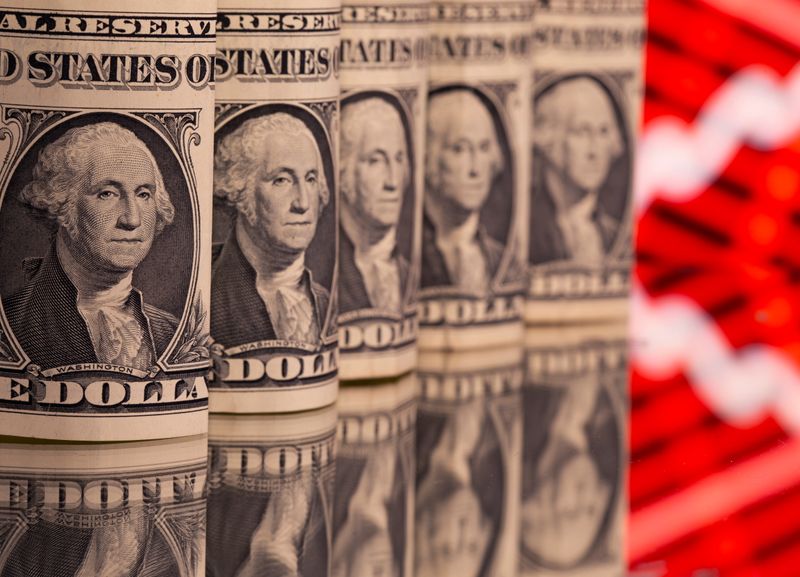By Gertrude Chavez-Dreyfuss
NEW YORK (Reuters) – The dollar climbed to a fresh 24-year peak versus the yen on Wednesday, holding above levels that prompted intervention by Japanese officials last month, while sterling rose after a sharp fall in the previous session as investors pondered the Bank of England’s next steps.
The greenback pared gains after minutes from the last Federal Reserve meeting showed some dovish undertones. Several participants noted the importance of calibrating the pace of further tightening to mitigate the risk on the U.S. economy, the minutes said. The Fed though remained committed to raising interest rates in order to bring down inflation.
“Maybe there is a bit of hope within the minutes that basically officials are weighing the risk of going too hard or going too high on hiking,” said Juan Perez, director of trading at Monex USA in Washington.
“That’s not the number one concern right now. Number one concern continues to be inflation.”
The pound, on the other hand, rose following a drop to a two-week low versus the dollar and euro late on Tuesday, after the Financial Times reported that the BoE has signaled privately to lenders it is prepared to prolong its bond purchases.
Data showing U.S. producer prices increased more than expected in September, further boosted the dollar against the yen. The producer price index for final demand rebounded 0.4%, above the forecast for a 0.2% rise. In the 12 months through September, the PPI increased 8.5% after advancing 8.7% in August.
In the wake of the U.S. PPI data, the greenback rose as high as 146.98 yen, its strongest since August 1998. It was last up 0.7% at 146.85, marking a fifth straight session of gains.
Japan staged its first yen-buying intervention since 1998 on Sept. 22, when the dollar was at 145.90 yen.
“This just reaffirmed that the BoJ (Bank of Japan) did not defend a particular level, but was addressing volatility,” said Marc Chandler, chief market strategist, at Bannockburn Global Forex in New York, adding that the three-month yen volatility was lower on Wednesday than when Japan intervened last month.
Three-month implied volatility on the yen was 11.9% , compared with a high of 13.26% on Sept. 22 when Japan stepped in to prop up the Japanese unit.
Officials have reiterated they stand ready to take appropriate steps to counter excessive currency moves, though whether they wish to defend particular levels is less clear.
Yields outside Japan have been pushed higher by spillover from the turmoil in Britain’s bond market.
Long-dated gilt yields jumped again, with the 20-year hitting a 14-year high a day after BoE Governor Andrew Bailey reiterated late Tuesday that the central bank would end its emergency bond-buying programme on Friday, telling pension fund managers to finish rebalancing their positions by then.[GB/]
Sterling fell to a two week low of $1.0925 after Bailey’s remarks, which were reiterated by a central bank spokesperson on Wednesday. The currency later rebounded to stand 1.2% higher at $1.1083, after the FT report which said the BoE had suggested to private lenders that it was open to extending its bond purchases.
Against the euro, the pound gained. In afternoon trading, the euro was down 1.2% at 87.40 pence.
Elsewhere, the euro remained under pressure, down 0.1% at $0.9696.
The risk-sensitive Australian dollar sank to a 2 1/2-year low of US$0.6236, and was last flat at US$0.6274.



